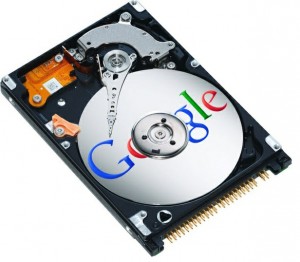 Just as with an Apple product launch, Google has had to do next to nothing to create buzz around its long-awaited Google Drive cloud storage service. The latest: Google Drive will launch next week.
Just as with an Apple product launch, Google has had to do next to nothing to create buzz around its long-awaited Google Drive cloud storage service. The latest: Google Drive will launch next week.
Of course, prognosticators have predicted much the same thing numerous times in the past, predictions that turned out to be wrong.
“Frankly, Google has been out to lunch on this,” said Frank Gillett, an analyst with Forrester Research. “The real question is: What took you guys so long? And have to got anything original or is this a ‘me too’ play.”
Regardless of whether Google Drive does indeed launch soon, would-be users need to ask themselves a number of questions about their needs before choosing a cloud storage service.
Google Drive will likely have many of the same features of other cloud storage and file synchronisation services, such as data encryption and the ability to edit a file on one device and have those changes automatically appear on every other device you own.
Details matter
There are nuances, however, to each service. For example, are you the only keeper of a password, or will the service you choose also have a password — and thus, access to your data if the government requests it?
It’s also important to know where your applications and data live now; That could point you in the direction of the service best suited to your needs.
“Rather than running out and signing up for Google Drive, ask yourself where you already have your email and content. You may already have a relationship with a company that does what you need,” Gillett said.
For example, if you’re already using Apple’s iLife suite of apps, then you can take advantage of iCloud. While iCloud doesn’t offer synchronisation of arbitrary files, it does support the iWorks suite.
“If you’re deep into Microsoft and use the Windows Live Essentials or SkyDrive, that already does a chunk of those services,” Gillett said. “If you’re way into Google, then Google Drive will make sense.”
Liz Conner, an analyst with market research firm IDC, said cloud storage and synchronisation service users should know exactly what the service is doing with their data. For example, does it replicate your files to their cloud, or actually migrate the data?
Where’s your stuff?
“Be aware of the location of the file. When you put stuff into DropBox, it’s no longer on your computer; it’s been uploaded,” she said. “Many people are unaware of that. Once they realise… it’s no longer on their computer, but in a third-party data centre, some people don’t necessarily like that.”
Conner was referring to the act of dragging a file into the Dropbox desktop application, which migrates it from the original machine to Dropbox’s cloud. That file will no longer be stored on the original machine. However, if a file is uploaded from a user’s computer to Dropbox via the web client or it is copied and pasted from the user’s computer into the Dropbox desktop application, the document is still available on the original machine.
Conner also advises users to find out how a cloud storage provider might use their data. “I don’t want someone data mining by information for purposes I didn’t intend it to be used for,” she said.
You may want to know whether the cloud storage service runs its own infrastructure, or if it uses another cloud storage provider’s data centre? Do you care?
DropBox is thought to be on Amazon Web Services and SugarSync is rumored to run its own infrastructure, Gillett said. “Do you feel better that they’re using an established third party that a lot in the industry have vetted…or would you rather not see them on Amazon?,” he said.
If you’re outside of the U.S. and want to make sure your data is not subject to the U.S.A. Patriot Act, you may want to make sure your files are not within the country’s borders.
Many devices, one service?
Today, many consumers have more than one device running on different OSes, such as a Windows laptops, an Apple iOS device or maybe an Android phone. Make sure the vendor supports the devices you currently have — or may want in the future.
“My whole house Mac, so the Apple iCloud makes more sense for us,” Conner said. “If your house is more of a mix, Android and iPhones, maybe a more OS-agnostic service would be better suited to your needs.”
Leading cloud storage providers such as DropBox, Box, SugarSync and YouSendIt, support multiple OSes, both mobile and desktop.
It’s also good to find out who the service is targeting. While Box still offers consumer-class services, it has gone after corporate users with features an IT administrator would want, such as the ability to remote wipe documents from mobile devices and manage access to corporate servers.
File synchronisation service SugarSync recently rolled out an iPad application for iOS users, allowing customers to synchronise data across Apple devices. It also supports Android, BlackBerry, Symbian and Windows Mobile applications.
There are a growing number of cloud providers now and more are joining the herd every day. For example, traditional backup providers such as Mozy, as well as anti-virus vendors like Trend Micro, are adding cloud storage and synchronisation services to their product portfolio. If you’re already using a backup service, check to see whether the company’s offering — or plans to offer — file synchronisation.
For example, Mozy’s Stash provides users with unified access to files. TrendMicro turned its 2010 acquisition of U.K.-based Humyo into SafeSync. Citrix bought ShareFile, adding a business-class file storage and synchronisation service.
While all the services offer encryption, if security’s important you’ll want to ask: Does the company encrypt the file before it’s sent over the Internet?
Search matters
One service that Google naturally may have a leg up on is search. Many of the current cloud storage services have clunky search engines that allow users to find files based on names or dates, but not content.
What would be especially interesting, Gillett said, is if Google Drive not only allowed users to search data stores, but connected services such as Google Mail, as well as the physical device itself – all using the same interface.
Four other companies already allow users to search multiple applications and devices. For example, FoundApp creates indexes on a user’s computer so you can search Gmail, Google Docs, Drop Box and files on the computer itself. Other providers who offer multiple online or physical device search include: PrimaDesk, CloudMagic and Greplin.
“That would be really interesting,” Gillett said. “If Google showed up to the party with a comprehensive search on all my services, plus the sync capability. That would be cool. I don’t think they’re going to show up with that.”
You’ll also want to find out how much free capacity a cloud storage service is offering — as opposed to extra storage you must pay for. Dropbox, for example, provides 2GB free; Box and SugarSync offer 5GB; Apple’s iCloud offers 25GB, while Microsoft’s SkyDrive provides 25GB with 5GB available for syncing to a local file folder in Windows.
“For all we know, Google Drive will share the same 7.7GB of space that you get with Gmail. Then if pay $5, you get another 20GB, which is cheaper than most,” Gillett said.





